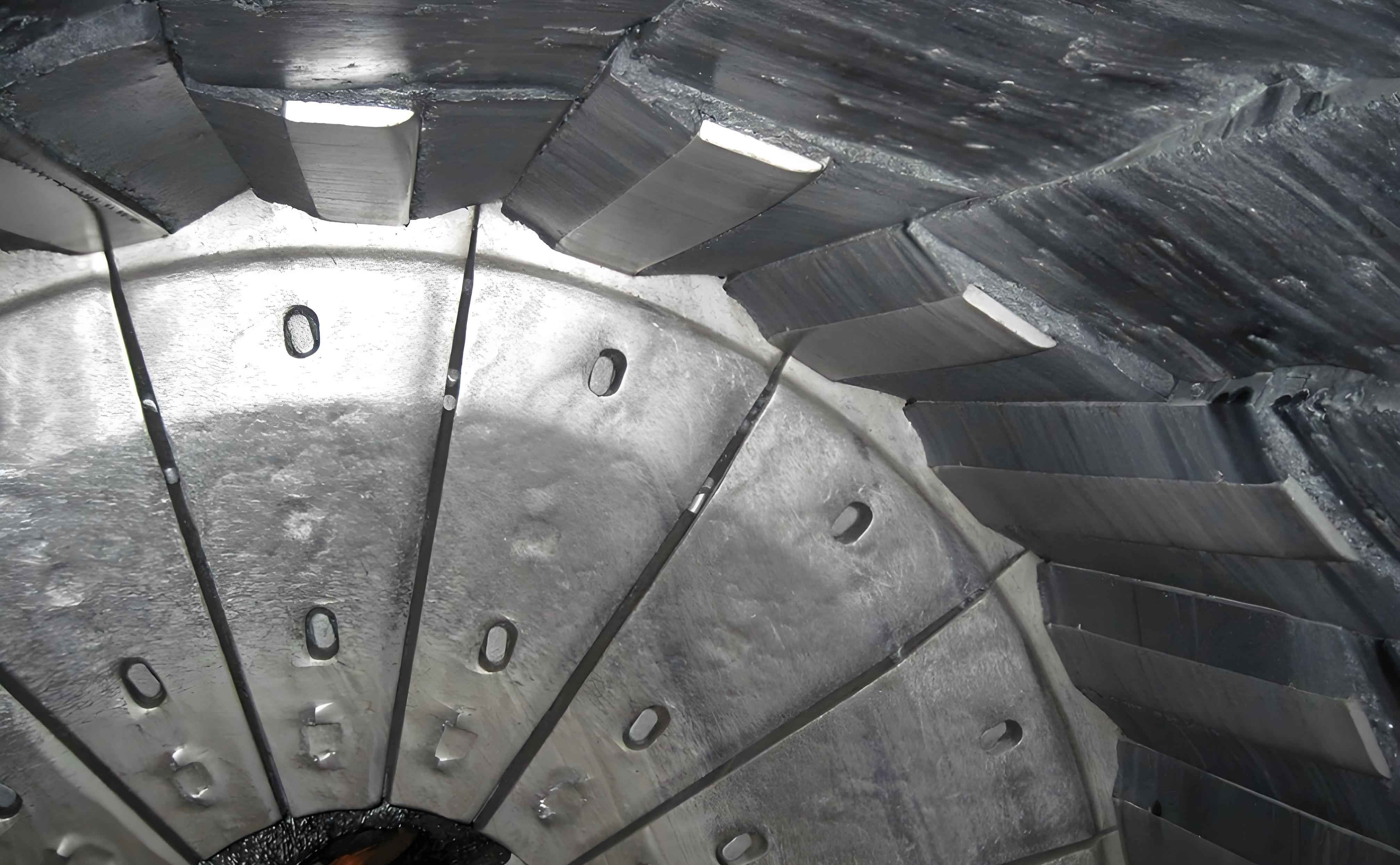1. Introduction
In the mining, chemical, and ceramic industries, the semi-autogenous grinding (SAG) mill and ball mill process is widely adopted for raw material grinding. The operational efficiency of these mills heavily depends on the durability and performance of critical components, particularly the lining plates. Traditional materials like manganese steel lining plates have long been used but face challenges such as short lifespans, high maintenance costs, and safety risks. This article explores the transition from manganese steel lining plates to rubber composite lining plates and finally to split-type composite lining plates, highlighting their advantages in small ball mills.
Our case study focuses on a zinc-tin ore processing plant in Yunnan, China, where Φ2700×3600 ball mills experienced frequent failures due to rapid wear of manganese steel lining plates. By adopting split-type composite lining plates, the plant achieved significant improvements in operational efficiency, cost reduction, and worker safety.

2. Challenges with Manganese Steel Lining Plates
2.1 Short Lifespan and Heavy Weight
Manganese steel lining plates, while initially popular for their hardness, exhibited critical drawbacks:
- Short Replacement Cycles: Average lifespan of 8–9 months, leading to frequent downtime.
- Excessive Weight: Individual plates weighed 100–200 kg, complicating installation and increasing injury risks.
- Extended Maintenance: Replacing a full set required 5–6 days, reducing equipment availability.
Table 1: Comparison of Lining Plate Weights
| Lining Plate Type | Total Weight (tons) | Single Plate Weight (kg) |
|---|---|---|
| Manganese Steel | 23.48 | 100–200 |
| Rubber Composite | 15.05 | 70 |
| Split-Type Composite | 12.30 | 40–60 |
2.2 Noise Pollution
Noise levels exceeded occupational safety limits (85 dB), averaging 92.38 dB(A) with manganese steel plates. Direct collisions between grinding media (steel balls) and rigid plates generated high-frequency noise, endangering workers’ health.
Table 2: Noise Levels with Different Lining Plates
| Month | Manganese Steel (dB(A)) | Rubber Composite (dB(A)) | Split-Type Composite (dB(A)) |
|---|---|---|---|
| January | 91.2 | 88.05 | 84.20 |
| February | 92.3 | 89.30 | 83.90 |
| March | 94.3 | 88.10 | 84.50 |
2.3 Poor Sealing and Stability
- Leakage Issues: Fast wear caused slurry leakage at bolt joints, necessitating unscheduled shutdowns.
- Fragility: Impact from grinding media led to cracks, unpredictable failures, and increased inspection costs.
3. Transition to Rubber Composite Lining Plates
In 2018, the plant introduced rubber composite lining plates to address manganese steel shortcomings:
3.1 Advantages
- Lightweight Design: Reduced single-plate weight to ~70 kg, enabling manual installation.
- Noise Reduction: Average noise levels dropped to 88.28 dB(A) due to rubber’s dampening effect.
- Improved Sealing: Elasticity minimized leakage, saving 40+ hours/year in downtime.
Equation 1: Noise Reduction Formula
ΔL=10⋅log10(IsteelIrubber)ΔL=10⋅log10(IrubberIsteel)
Where ΔLΔL is the noise reduction (dB), and II represents sound intensity.
3.2 Limitations
- Short Lifespan at Feed/Discharge Ends: Wave-structured rubber plates lasted only 3–6 months due to localized wear.
- Unpredictable Maintenance: Irregular failures disrupted production schedules.
4. Breakthrough: Split-Type Composite Lining Plates
In 2021, the plant adopted split-type composite lining plates, featuring a modular design with separable lifters and base plates.
4.1 Structural and Operational Benefits
- Weight Reduction: Single-plate weight decreased by 47–53%, accelerating installation.
- Extended Lifespan: Feed/discharge end lifespan increased from 3 months to 10+ months.
- Targeted Replacement: Only worn lifters require replacement, preserving base plates.
Table 3: Performance Comparison of Lining Plates
| Metric | Manganese Steel | Rubber Composite | Split-Type Composite |
|---|---|---|---|
| Lifespan (months) | 8–9 | 3–6 | 10–12 |
| Annual Replacement Cost | $12,000 | $9,500 | $5,000 |
| Noise Level (dB(A)) | 92.38 | 88.28 | 84.50 |
4.2 Economic Impact
- Reduced Maintenance Time: Downtime dropped from 6 days to 3 days per replacement.
- Energy Savings: Power consumption decreased by 30 kW compared to wave-structured plates.
- Annual Cost Savings: $7,000+ saved by replacing only lifters instead of full plates.
Equation 2: Cost Savings Calculation
Savings=(Cfull−Csplit)⋅NSavings=(Cfull−Csplit)⋅N
Where CfullCfull = cost of full plate replacement, CsplitCsplit = cost of lifter replacement, and NN = annual replacements.
5. Case Study: Operational Data from Yunnan Plant
5.1 System A vs. System B
Two identical Φ2700×3600 ball mills were compared:
- System A: Traditional wave-structured rubber lining plates.
- System B: Split-type composite lining plates.
Table 4: Performance Metrics (2021–2023)
| Parameter | System A | System B | Improvement |
|---|---|---|---|
| Annual Downtime (hours) | 108 | 36 | 66.7% |
| Energy Use (kWh/t) | 25.3 | 22.1 | 12.6% |
| Maintenance Cost ($) | 9,500 | 5,000 | 47.4% |
5.2 Worker Safety and Productivity
- Injury Rate: Reduced by 60% due to lighter plates and shorter maintenance.
- Noise-Related Health Issues: Dropped by 45% post-implementation.
6. Conclusion
The transition from manganese steel to split-type composite lining plates represents a paradigm shift in ball mill efficiency. Key outcomes include:
- Longer Lifespan: 10–12 months vs. 8–9 months for manganese steel.
- Cost Efficiency: 47% reduction in annual maintenance costs.
- Sustainability: Lower energy use and enhanced worker safety.
Future research should focus on optimizing lifter geometry and material composition to further extend the lining plate lifespan. For industries relying on small ball mills, adopting split-type designs is not just an upgrade—it’s a necessity for staying competitive.
